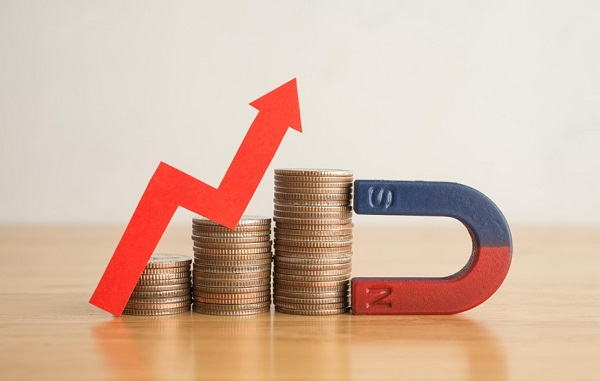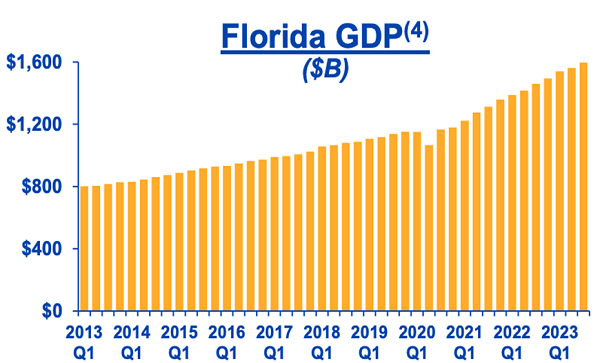“Daddy,” My nine-year-old started. I knew exactly what she was about to say.
“They said a lot of bad words.”
We were strolling out of Golden 1 Center. Our playoff-hopeful Sacramento Kings had just dropped another home game to a losing team. Our fellow fans were in foul moods.
Their postgame language was, shall we say, colorful. I thanked my daughter for her observation, and we continued our stroll away from the salty crowd. Best to get some distance before calling an Uber.
(A reformed dad like me couldn’t lecture our neighboring group with any real credibility. I mean, please don’t rewind my personal postgame tape to my time as a twenty-something. Different times.)
We income investors, ironically, fear hearing a different “B word” than postgame dads…
Bubble.
It’s amazing how fast the financial seasons can turn. Two years ago, the Federal Reserve began hiking interest rates. With each turn of the rate hike dial, Chairman Jerome Powell crushed the entire stock and bond markets.
Just six months ago, I sent a special “stay calm” alert to my Hidden Yields subscribers and also talked about buying the dip here at Contrarian Outlook.
Different times!
The one-off soothing email to my HY readers was a rarity. I don’t often send these types of emails and, when I must, it is typically a sign that we are near a major market low. Best to hang on and make a buy or sell decision months later after a rebound.
For example, I didn’t want anyone selling a perfectly good dividend payer like NextEra Energy (NEE) at the October lows.
Granted, at some point, one of these panics will be prescient. All of the Fed’s interest rate hikes will eventually add up.
The housing market has already slowed to a crawl. Mortgages are a lot more expensive. I’m glad we like our house because we ain’t moving now.
Commercial landlords are up against it too. Nobody rents office space anymore! In-person retail has migrated to online e-commerce.
Then we have the regional banks. One year ago, the weakest and most levered, such as Silicon Valley Bank, were failing. Fundamentally, not much has changed. The smaller guys will continue to have a hard time attracting deposits with money markets paying 5%. Just last week, New York Community Bank needed a lifeline. Even though it got one, its stock trades below $4.
The broader economic fears are justified. One by one, industries slow. Eventually, the much-anticipated recession arrives.
We careful contrarians are preparing now. Better to position ourselves with a recession-resistant portfolio ahead of the broader herd.
After all, when the slowdown becomes obvious, we’ll hear about “flight to safety” moves. Investors will run from their AI darlings and buy safe stocks. Like utilities that pay dividends. Which we already own!
NEE represents the “best of both worlds.” It’s a dividend payer and raiser that will do just fine during a recession. Or likely more than fine. NEE’s price will rise as rates decline.
We’re talking about the fastest growing utility dividend on the planet here. Dial in 10% divvie hikes per year, every year, with NEE. Plus, a 3.6% current payout.
We dividend magnet students know how this story goes. Over time, rising payouts drag their stock prices higher. They act like magnets, pulling the stock up over time.

Over the last 10 years, NEE delivered 228% total returns (price plus dividends). It trounced popular, but lazy, “go to” sector ETF Utilities Select Sector SPDR ETF (XLU), which returned 122% over the same period.
NEE runs a better business than the average utility. Its NextEra Energy division is one of the world’s biggest renewable-power investors, with 67 gigawatts in operation. Meanwhile, NEE operates regulated Florida Power and Light. It is big in solar, which is now the cheapest form of energy in Florida.
Florida, by the way, is booming. GDP is trending up, up and away. If I were running a utility, this is the state I’d pick:

Source: NEE Investor Relations, Bureau of Economic Analysis
Keep that A/C running, Sunshine State!
Yet NEE’s stock price languishes 38% below its all-time highs. The reason? Interest rate increases that are largely in the rearview mirror.
Let’s buy the dip. NEE trades opposite long rates. The closer we get to that recession and lower rates, the more we’ll see utility stocks rise. Which makes right now the right time to buy NEE.
Chief Financial Officer Kirk Crews is my dividend hero because he’s the fastest pay raiser in the utility space. Kirk also “calls his shots”—projects—how much more money he’s going to hand out in the years ahead.
Our dividend man recently estimated that NEE will pay out 10% more per year for the foreseeable future. That’s consistent with the utility’s last 15 years of dividend growth, which have been (to use a technical term) terrific. NEE investors have enjoyed 10% dividend growth per share every year since 2007. Seventeen years!
As the dividend climbs, so does NEE’s share price. It has a bit of catching up to do. Lower rates should help inspire this stock to pop!
We’ll talk more recession-resistant dividends in our March edition of Hidden Yields. I’m emailing the new issue out this Friday.
In March HY I’ll have a brand new pick for you—my favorite dividend stock to buy right now. Plus, we’ll discuss my top five recession-resistant plays. And more.
Just one thing—as I write this, we don’t have you as an active HY subscriber. It’s an easy fix. Click here to try (or retry) HY on a risk-free basis.
